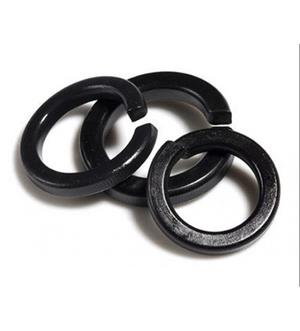Top Companies for Sourcing Quality Spring Washer Sizes and Specifications in the Industry
Understanding Spring Washer Sizes and Their Application in Various Industries
Spring washers are essential components used in various mechanical assemblies to provide flexibility, adjustability, and secure fastening. Their unique design helps maintain tension and provide a cushioning effect, which reduces wear and tear on bolted joints. With numerous applications across different industries—ranging from automotive to construction—understanding the sizing and specifications of spring washers is crucial for manufacturers, engineers, and maintenance personnel.
Types and Sizes of Spring Washers
Spring washers come in various types, including conical, wave, and belleville washers. Each type provides specific benefits, such as shock absorption or locking capabilities. The sizing of these washers is crucial, as it depends on the diameter of the bolts or nuts with which they will be used. Generally, spring washers are available in metric and imperial sizes, ensuring compatibility with standard fasteners.
When selecting the appropriate size for a spring washer, it’s essential to consider the inner diameter, outer diameter, and thickness. Inner diameter should directly correspond with the bolt size. For instance, if you're using a bolt with a diameter of 10mm, a spring washer with an inner diameter of 10mm will provide the best fit. The outer diameter should be greater than or equal to that of the nut or the component it supports, ensuring a firm grip and effective load distribution.
Importance of Choosing the Right Size
Selecting the right size of a spring washer is pivotal to ensuring the longevity and reliability of the assembly. An undersized washer may not provide adequate tension, leading to loosening of the bolted joint under load or vibration, while an oversized washer might not fit securely, causing instability. Both scenarios can lead to critical failures, potentially resulting in costly downtime and repairs.
spring washer size companies

Additionally, spring washers are sometimes used in environments where high levels of vibration or thermal cycling occur. In these cases, the proper sizing becomes even more critical, as a correctly sized spring washer will maintain its elasticity over time, preventing fastener loosening. This is particularly significant in industries such as aerospace, automotive, and heavy machinery, where safety and reliability are paramount.
Sourcing and Manufacturing
There are numerous companies that specialize in the production and supply of spring washers in various sizes. Many manufacturers offer customization options for specific applications, catering to the unique needs of their clients. When sourcing spring washers, it’s essential to consider the manufacturer's reputation, quality assurance processes, and the specifications they adhere to.
Industry players often emphasize the importance of complying with international standards such as ISO and ASTM, ensuring that the washers meet strict quality guidelines. Reputable companies offer detailed product catalogs specifying the dimensions, materials, and load ratings of their spring washers, aiding clients in making informed decisions.
Conclusion
In summary, understanding the importance of spring washer size is vital for anyone involved in mechanical assembly and maintenance. The right size selection can dramatically influence the performance and longevity of bolted joints across various industries. With a plethora of options available, careful consideration of specifications, compliance with international standards, and collaboration with reputable manufacturers can ensure optimal outcomes in your projects. Whether you're in construction, automotive engineering, or any other field, prioritizing the right size of spring washers will help in creating safer and more reliable mechanical assemblies.
-
Top Choices for Plasterboard FixingNewsDec.26,2024
-
The Versatility of Specialty WashersNewsDec.26,2024
-
Secure Your ProjectsNewsDec.26,2024
-
Essential Screws for Chipboard Flooring ProjectsNewsDec.26,2024
-
Choosing the Right Drywall ScrewsNewsDec.26,2024
-
Black Phosphate Screws for Superior PerformanceNewsDec.26,2024
-
The Versatile Choice of Nylon Flat Washers for Your NeedsNewsDec.18,2024










